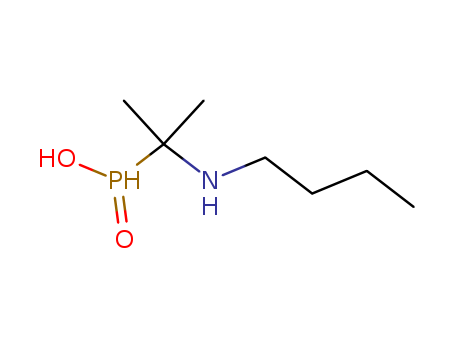
Antioxidant BHT 264
CAS:128-37-0
Purity:99%
Contact Now
We will contact you as soon as possible
Your Location:Home >Products >Pharmaceutical API >17316-67-5


Product Details
|
Veterinary raw materials |
Butafosfan is veterinary raw materials to promote metabolism with a strong antioxidant, which can effectively inhibit self-oxidation of fat at lower concentrations. In pure physical stimulation mode, it can enhance assimilation of each part in animal body, and can promote liver function, promote enhancement of smooth muscle function and improvement of skeletal muscle system in various organs, and help muscles movement and recovery from fatigue, reduce stress reaction, stimulate appetite, promote non-specific immune function. Butafosfan, as main ingredient of organic phosphorus supplement, can participate in the citric acid cycle in vivo, promote metabolism, speed up synthesis and utilization of the body's essential energy, and therefore can enhance the body's non-specific immunity, improve disease resistance ability of the body, but also can effectively remove the body's metabolism of ketone bodies. improve the lactic acid content, help fast rehabilitation of the disease. The above information is edited by the lookchem of Liu Yujie. |
|
Clinical application |
Compatibility of Butafosfan and vitamin B12 (abbreviation: VB12) has synergistic effect, VB12 is involved in various metabolism, such as carbohydrates, fat, participating in biosynthesis of essential amino acids and proteins, participating in synthesis of blood cells, playing an important role in the maintenance of normal nerve tissue and heart function, at the same time maintaining a normal gastrointestinal motility and gastric secretion and gastrointestinal absorption of fat and normal function of fermentation, promoting growth and feed efficiency of livestock. It adapts for disease prevention and health treatment in all stages of pigs, speeding up the rehabilitation of sick animals. 1.Effective rehabilitation and restoration of liver and kidney organ damage caused by "toxic mold" and "background disease ", it can promote detoxication and detoxification function of liver and kidney and play a role in protecting liver and kidney. 2.As for the prevention and treatment of various diseases in pigs, in particular, a number of diseases caused by immunosuppression, such as swine fever, blue ear disease, swine flu, pseudorabies, porcine circovirus disease, swine vesicular disease and pleural pneumonia, Vice pig addicted blood, etc. it has a good secondary effect. During disease infection with use of this product can accelerate the recovery. 3.It can relieve immunosuppression, strengthen non-specific immune function, activate the immune system, improve disease resistance and stress responses in pigs. 4. It can be used to improve metabolism of sick animals to promote their rehabilitation, making insulin concentration increase, improving appetite and feed intake of animals at the greatest extent. 5. It can improve the ability of lactating sows, shorten diestrus after weaning; improve the libido of boar and quality of semen. 6. Butafosfan can patch the sow metabolism dysfunction, promote smooth muscle function of uterine, make delivery faster and more smoothly, and help sow recover from fatigue in production, maintain feed intake and milk yield, avoid occurrence of reproductive failure. In piglets, it can improve their physical resistance by various stress experienced after the birth, so as to reduce the incidence of the disease, and can promote production of red blood cell, promote metabolism, accelerate the growth rate. |
|
Toxicity evaluation |
The acute toxicity of butafosfan is very low. The oral LD50 in mice was approximately 16 000 mg/kg bw. After parenteral administrations, the following LD50 values were obtained in mice: approximately 21 000 mg/kg bw (subcutaneously), approximately 10 000 mg/kg bw (intravenously) and greater than 2500 mg/kg bw (intraperitoneally). Mice dosed orally or subcutaneously died within 3 and 2 days, respectively, while survivors had recovered by that time. The LD50 value in chicken (intramuscularly) was 9974 mg/kg bw. Observed toxic signs were excitation, cyanosis, sternal recumbency and diarrhoea. |
|
Uses and Mechanism of Action |
2-(Butylamino)propan-2-yl-hydroxy-oxophosphanium, in combination with vitamin B12, is used in veterinary medicine for transition dairy cows. It is used for the prevention and treatment of metabolic and reproductive diseases, subclinical and secondary ketosis, displaced abomasum, milk fever, improvement of postoperative rumen activity, uterus involution, and mastitis in transition dairy cows. 2-(Butylamino)propan-2-yl-hydroxy-oxophosphanium, in combination with vitamin B12, acts as a metabolic stimulant interfering with energy metabolism in transition dairy cows. It functions as a cofactor for enzymes involved in metabolic processes, such as methionine synthase and methylmalonyl-CoA mutase. |
|
History |
2-(Butylamino)propan-2-yl-hydroxy-oxophosphanium has been available for veterinary use since 1958, with the first publication appearing in the 1970s regarding its use in cows. |
|
Usage |
Veterinary raw materials, main active ingredient of organic phosphorus supplement; promoting liver function; helping muscle co-op system recovery from fatigue; reducing stress reaction; stimulating the appetite; promoting non-specific immune function; simple physical stimulation pattern, no residue in vivo, no side effects. |
InChI:InChI=1/C7H16NO2P/c1-4-5-6-8-7(2,3)11(9)10/h8H,4-6H2,1-3H3/p+1
-

N-butylamine


acetone


(1-butylamino-1-methyl)ethylphosphonic acid
| Conditions | Yield |
|---|---|
|
With
hypophosphorous acid;
|

N-butylamine

acetone